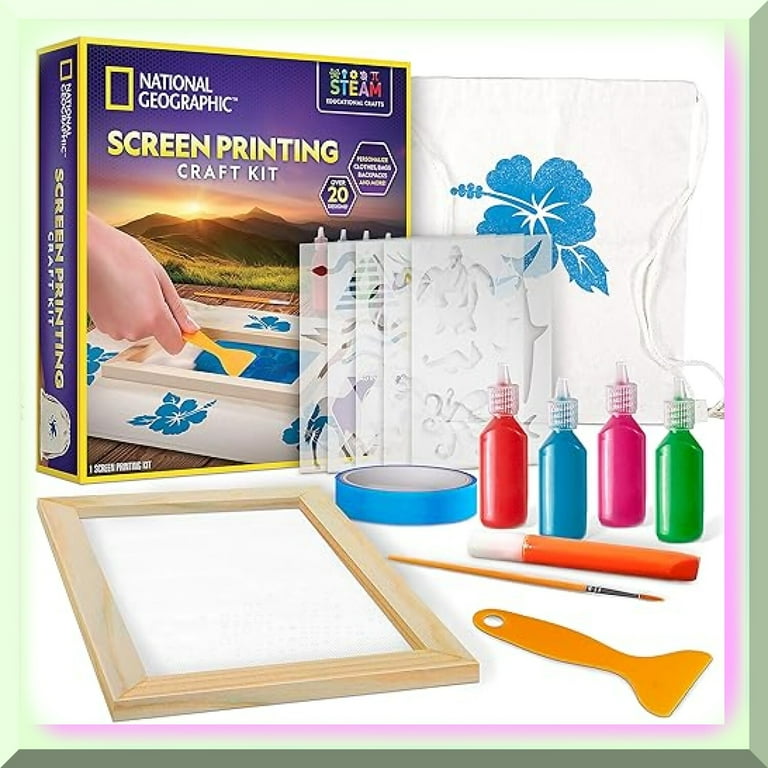High-Volume T-Shirt Printing for Schools and Organizations
High-Volume T-Shirt Printing for Schools and Organizations
Blog Article
Display Printing Uncovered: Everything You Need to Know Concerning T-Shirt and Garment Printing Methods
Display printing is an interesting technique that combines art with technique, offering countless possibilities for creativity. Ready to check out the important components that make display printing an art kind?
The Basics of Display Printing: Exactly How It Functions
When you dive right into display printing, you'll discover it's both a scientific research and an art. At its core, screen printing involves developing a stencil, or display, that permits ink to pass through just in details locations.
Following, you'll blend your inks and prepare your printing surface area. Setting the screen over the material, after that use a squeegee to push ink through the display onto the garment. This procedure needs accuracy, as you want clear, vivid prints. After printing, you'll heal the ink with heat, ensuring it abides by the textile and lasts with washes. Each action is vital, and understanding them will boost your display printing abilities, changing simple garments into unique, meaningful items.
Types of Display Printing Strategies
When you grasp the fundamentals of screen printing, it's time to explore the numerous strategies that can elevate your layouts. One popular method is traditional display printing, where ink is pushed via a stenciled screen.
Another alternative is plastisol printing, recognized for its longevity and vibrant shades, making it a favored for numerous brands. Experiment with halftone printing to produce slope results and complex styles.
Crucial Tools for Display Printing
To attain stunning outcomes in display printing, having the right equipment is fundamental. You'll require a tough display printing structure, which holds the mesh that transfers your layout onto the garment. Next off, invest in top quality squeegees; these are important for applying ink equally throughout the screen.
Selecting the Right Inks and Products
When picking inks and products for screen printing, you require to take into account the sort of ink that functions finest for your job. Think about material compatibility to ensure your styles look last and fantastic lengthy. Explore eco-friendly ink choices to make your printing process a lot more lasting.
Kinds Of Display Inks
Selecting the best screen ink is essential for attaining lively, durable prints that meet your project's demands. There are numerous kinds of display inks to analyze. Plastisol ink is popular for its adaptability and simplicity of use, providing excellent shade opacity on dark fabrics. Water-based ink, on the other hand, uses a softer feel and is environment-friendly, making it ideal for those wanting to reduce their ecological effect. Release inks remove color from the material, leading to a soft, classic look yet need particular handling. Lastly, specialty inks, such as metal or glow-in-the-dark, can include one-of-a-kind effects to your styles. Review your job demands and select the ink that lines up finest with your desired end result.

Fabric Compatibility Considerations
Comprehending material compatibility is essential for accomplishing high-grade display prints, specifically given that different products respond distinctively to different inks. Always evaluate your inks on sample textile to guarantee they adhere appropriately and maintain shade integrity. Furthermore, maintain in mind that textile weight and texture can influence the final end result, so choosing the right ink and product combination is crucial for your task's success.
Eco-Friendly Ink Options
Environment-friendly inks are ending up being a popular selection for screen printers who desire to minimize their environmental impact while preserving high quality. When choosing inks, take into consideration water-based inks, which are less harmful and easier to clean up compared to conventional solvents.
Additionally, try to find inks made from renewable energies, such as soy or vegetable-based alternatives. By picking the right inks and materials, you'll not just create stunning styles but also add to a much more sustainable printing procedure. Make the switch, and your prints will certainly reflect your dedication to the setting!
Preparing Your Layout for Display Printing

File Style Needs
To guarantee your design looks dynamic and sharp on material, you'll require to pay attention to file style demands for display printing. Start with vector documents like AI or EPS, as they can be scaled without shedding high quality. If you utilize raster images, choose high-resolution data, such as TIFF or PNG, preferably at 300 DPI. Avoid using JPEGs, as they can lose clarity when resized. Also, make certain your design has a transparent background to stop undesirable white sides on your prints. Lastly, keep shade modes in mind; CMYK is typical for display printing, so transform your RGB develops as necessary. By adhering to these guidelines, you'll set your artwork up for a successful print.
Color Separation Methods
Shade separation is a necessary step in preparing your style for display printing, and understanding it can significantly improve your print top quality. You'll need to break your layout into specific colors, as each color requires a different display during printing. This accuracy not only assures accurate shade representation yet also improves the printing process.
Resolution and Size
Achieving the very best outcomes in screen printing begins with guaranteeing your style has the appropriate resolution and size. Preferably, your artwork ought to go to least 300 DPI (dots per inch) for sharp, clear prints. If you click here now utilize reduced resolution, your end product might look pixelated and amateur.
When it pertains to dimension, consider the dimensions of your print location. Layout your artwork to match the final print dimension, preferably creating it in the actual measurements you'll be printing. By doing this, you'll avoid any type of unanticipated scaling issues.
Constantly check your style in both vector and raster layouts. Vector graphics can be scaled without losing high quality, making them optimal for screen printing. Preparing appropriately will ensure your design looks incredible on every garment!
Step-by-Step Screen Printing Refine
Display printing is a vibrant procedure that enables you to create lively layouts on various surfaces. To get started, you'll require a display, emulsion, and your chosen ink.
After rinsing the unexposed emulsion, your screen is all set. Establish it up on your printing surface area and align your garment underneath it. Pour ink onto the screen and make use of a squeegee to press the ink with the stencil onto the fabric. Lift the display meticulously and allow the print completely dry. Cure the ink using warmth to assure durability. That's it! You've effectively display printed your style.
Tips for Effective Screen Printing Projects
While you're diving right into your screen printing tasks, bear in mind that prep work is essential to success. Begin by collecting all your materials-- inks, displays, garments, and mops. A clean work space aids avoid undesirable errors, so clean before you start.
Next, confirm your art work is high-resolution and effectively sized for your garment. Evaluate your display for proper exposure and tidy it thoroughly to avoid smudges. When blending your inks, adhere to the maker's standards to achieve check this site out the ideal consistency.
During printing, use even pressure with your squeegee for regular results. Don't hurry; take your time to verify each print satisfies your standards. After printing, let your garments completely dry completely prior to managing or packaging them.
Last but not least, always maintain a sample of your help future reference. By doing this, you can assess your development and enhance your techniques gradually. Happy printing!

Often Asked Concerns
For how long Does It Require To Establish a Screen Printing Task?
Establishing a display printing task commonly takes around half an hour to an hour. You'll prepare the displays, mix inks, and readjust journalism. The time differs based on complexity and experience, so stay organized!
Can I Print on Different Fabric Enters Making Use Of the Very Same Strategy?
Yes, you can publish on different fabric types using the same strategy, yet you'll need to adjust your inks and setups. Some materials absorb ink differently, so trying out warranties the most effective results for each product.
What Are Typical Errors to Avoid in Display Printing?
When display printing, avoid usual errors like making use of the incorrect ink, ignoring proper direct exposure times, or avoiding pre-press checks. Constantly check your setup and keep clean displays to guarantee discover this info here top quality results each time.
Just How Can I Appropriately Clean and Keep My Screen Printing Tools?
To correctly tidy and preserve your display printing devices, you ought to on a regular basis wash screens with ideal solvents, examine mops for wear, and ensure all devices are kept dust-free and completely dry. Consistency enhances and prevents expensive repairs efficiency.
Is Screen Printing Ecologically Friendly Compared to Various Other Techniques?
Screen printing can be a lot more eco-friendly than other methods, particularly if you make use of water-based inks and eco-conscious materials. By choosing sustainable products and practices, you lower waste and reduce your effect on the earth.
Screen Printing Uncovered: Whatever You Required to Know Concerning T-Shirt and Garment Printing Methods
At its core, display printing includes producing a stencil, or screen, that permits ink to pass via just in details locations. Placement the display over the fabric, then use a squeegee to push ink with the display onto the garment. One preferred approach is traditional screen printing, where ink is pressed through a stenciled screen.When choosing inks and materials for screen printing, you need to take into account the type of ink that works finest for your job.
Report this page